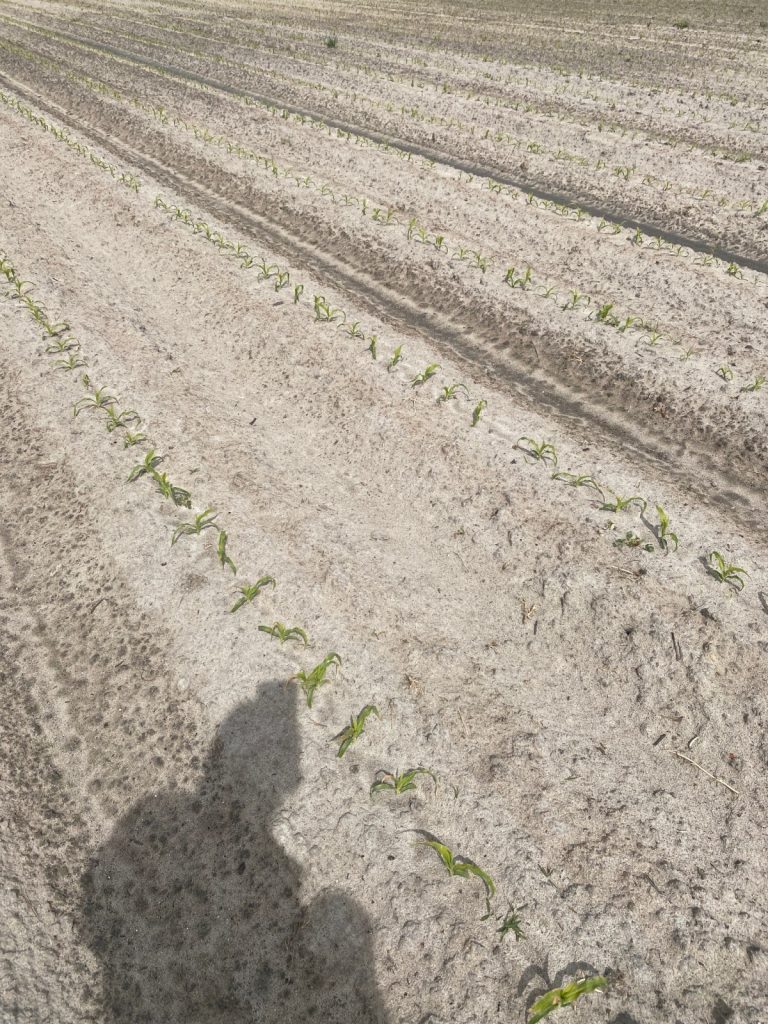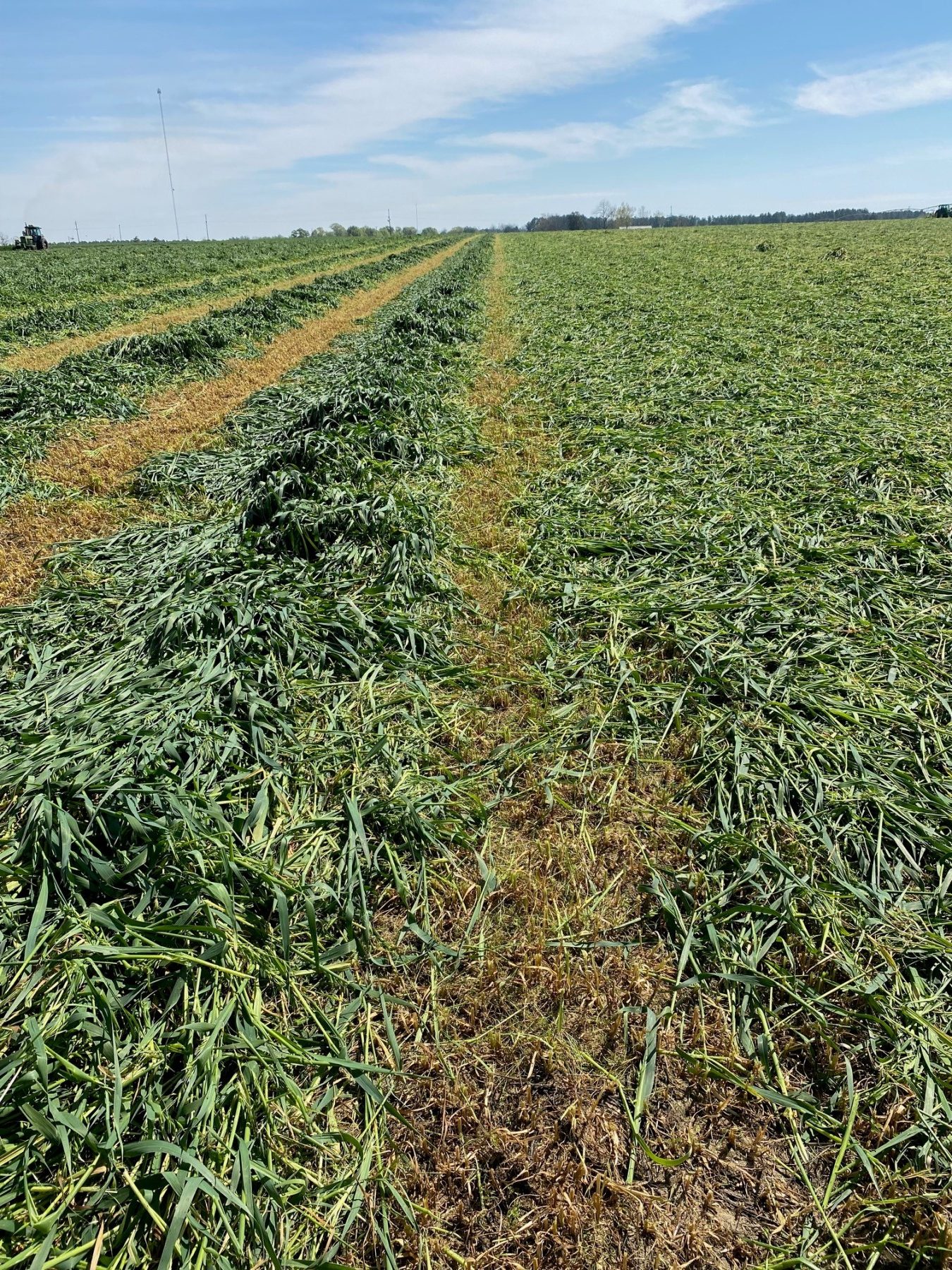It has been another exciting week in Colquitt County agriculture. Corn producers are starting to plant. Cotton and peanut growers are applying burn down for the up coming year. Wheat crop is in the head and anthesis stage of development. Forage producers are baling oat baleage.
Mr. Kichler, I missed the UPW training in Moultrie; what are my options? Producers and applicators that still need the training have a few opportunities in the near future. County agents cannot do these trainings this year. If somebody needs to attend an UPW training please refer to the link and the table below for upcoming opportunities in the near future.

How do I obtain a private applicators license? This question often comes up at the Colquitt County Extension office. Information about obtaining a Private Applicator License is below.
Private-Pesticide-Applicator-Packets
Where do I place my starter fertilizer when planting corn? Banding a starter fertilizer two inches to the side and two inches below the seed increases the chance of roots penetrating the fertilizer band and taking up needed nitrogen and phosphorus.
Updated Counter/Herbicide Interactions in Field Corn (Prostko): In a previous blog (March 9, 2022), I discussed the negative interaction that can occur when Counter (terbufos) or other OP insecticides are used in-furrow and followed by applications of certain herbicides in field corn. Here is the newest information about the use of Counter and herbicides in field corn from AMVAC® (click on this link).
Mr. Kichler, why were you walking around that corn field the other day with a tape measure? A good, easy way to evaluate corn populations is to use the 1/1000-acre method. This method allows a corn grower, consultant, or county agent to count the number of plants in 1/1000th of an acre and then multiply by 1000 to get plants per acre to estimate corn populations. Table 4, which is in the UGA Corn Production Guide, shows the length of row required at various row widths to calculate 1/1000 acre. For example, if you plant corn on a 38-inch row, measure 13 feet and 9 inches to obtain 1/1000th of an acre. After the distance is established, count the number of corn plants within that distance and multiply that number by 1000. This will be your plant population per acre. Do this procedure in numerous places across the field.


What should my forage moisture be for baled silage?
Local cattle producers have been baling oats for baleage for the last couple of weeks. Considering all factors, the optimum whole-plant moisture for baled silage is 50-60%. Baling at the proper moisture content is a key to success in producing baleage. Forage containing less than 40% or more than 65% moisture should not be baled for silage in order to avoid excessive molding or spoilage. Producing bales with too much moisture reduces forage quality and increases the chance of undesirable butyric acid fermentation. Baling with low moisture reduces fermentation and increases mold production, which greatly increases storage losses.

How do I determine forage moisture?
I have received a question or two about how to determine forage moisture this week. Growers need to make sure they are baling forages at the proper moisture depending on storage method. The most accurate method of determining moisture is by using a microwave. The microwave method of determining forage moisture can be found HERE.
Also, Dr. Lisa Baxter, UGA Forage Specialist, has a great job discussing various methods of moisture determination in forages. This YouTube video can be seen HERE.
Is it going to frost any more? The weather over the last month has been a roller coaster ride. There was a good frost that occurred this past Tuesday morning (March 21, 2023) in Colquitt County. The illustration below shows the probability (10, 50, and 90%) of the last freeze date for the southeast United States. This information is from www.agroclimate.org . For the Colquitt County area, a 90% chance of a freeze event is from January 21–31, a 50% chance from February 21–28, and a 10% chance from March 11–20.

The last frost dates for the Colquitt County area for the last 18 years are shown in the table below. This data is from the Sunbelt Expo location of the UGA Weather Network.

Summary of Low-Input Pecan Trial – (Lenny Wells) For the last 5 years, we have been conducting a study on the performance of three low-input pecan cultivars—Lakota, Excel, and McMillan—at the UGA Ponder Farm near Tifton. As we have managed this particular orchard, low input in this case, refers to the absence of fungicide applications. The trees received all other normal inputs with regard to fertilizer, irrigation, insect management, etc. but never received any fungicide sprays. I have written about this before and the trial has been featured at numerous field days but we have completed and published the work on these 3 cultivars. The results and the paper describing the 5-year study in detail can be found at the link below: READ MORE.
Verification of the 2022-2023 U.S. winter outlook — (Pam Knox) Every year in the ENSO blog, NOAA climate forecasters look back at the prediction for last season and discuss how good it was. This keeps them honest and shows that this year, the prediction was quite good, especially for the Southeast. As usual, temperature is easier to predict and get correct than precipitation, and that certainly turned out to be the case this year. The blog discusses how the verification was made and what factors contributed to differences between the forecasts and the final climate summary. You can read the full analysis at https://www.climate.gov/news-features/blogs/verification-2022-2023-us-winter-outlook. (READ MORE)
Have a great weekend and if you have any questions please contact your local county agent.
Jeremy M. Kichler
County Extension Coordinator
Colquitt County
